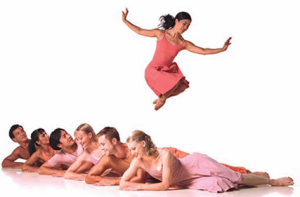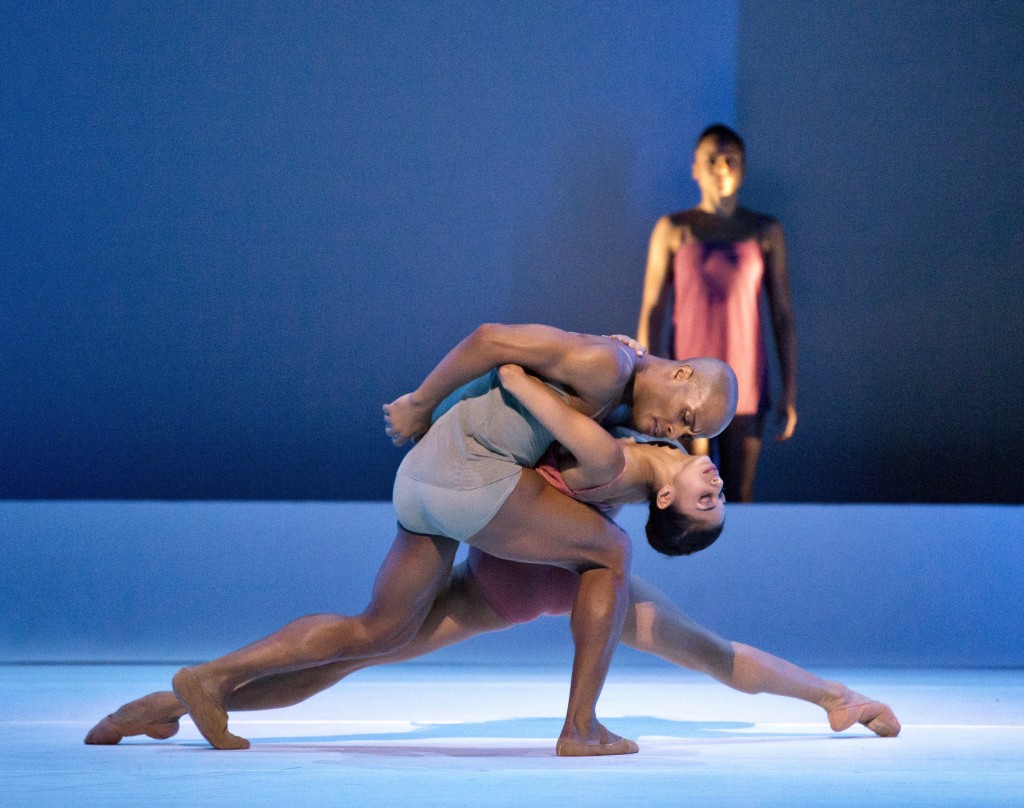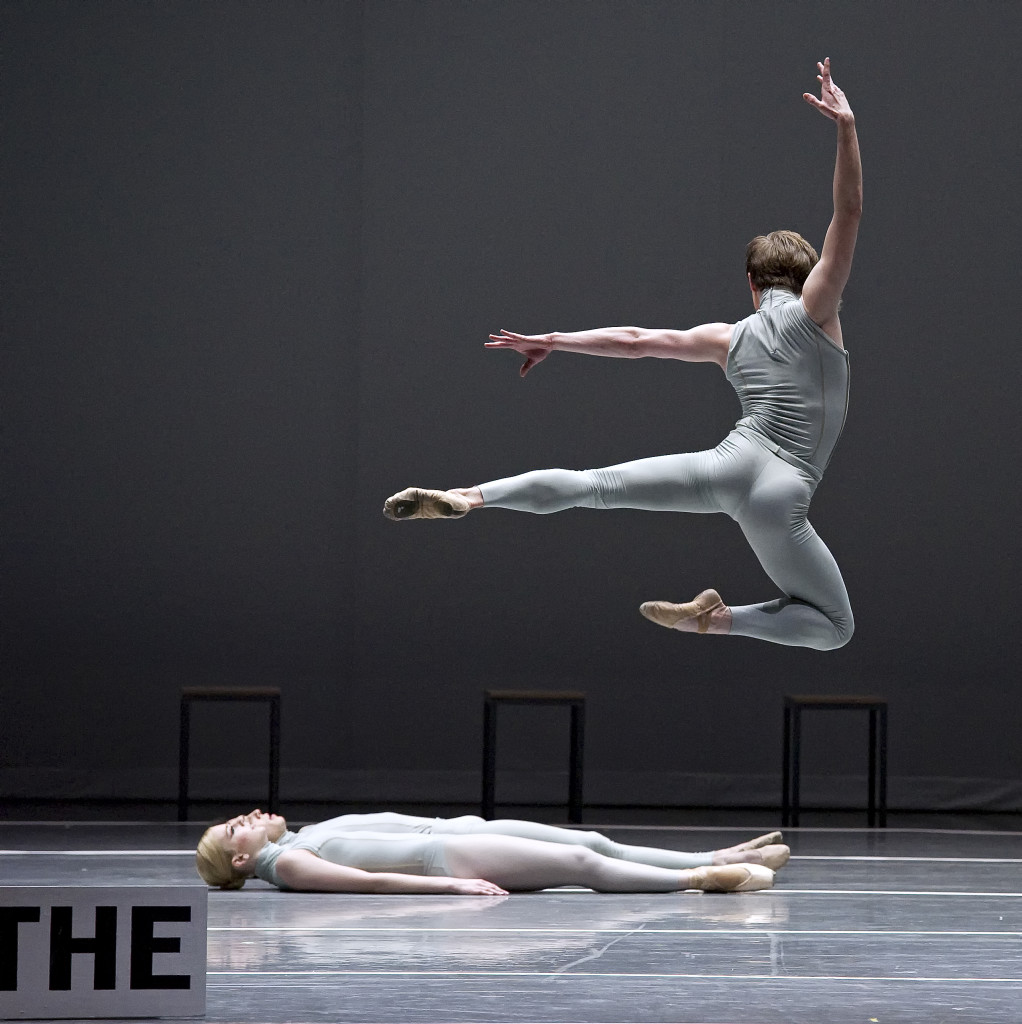What’s going on with these newly announced institutions? Are ballet and modern dance retrenching back into their separate silos?
Just when the dance world has become so stimulating with its jumble of influences from all over the world, and when classical ballet and contemporary dance are criss-crossing in interesting ways, we have recently seen announcements for two major initiatives that stake out claims for a certain kind of dance—a limited kind of dance that is easy to name.
The two are Paul Taylor’s American Modern Dance and Jennifer Homans’ Center for Ballet and the Arts. There’s a ring about each name that implies that the form in question is endangered, and that these initiatives are meant to protect them in their purity.
Some of the most exciting dance I’ve seen lately would not fit into either category. Wayne McGregor’s Chroma, Arthur Pita’s Metamorphosis, JR’s 8-minute Les Bosquets for New York City Ballet, Mats Ek’s Bye for Sylvie Guillem. I suspect that these hybrids are exactly the kinds of things these two initiatives are protecting against. But if you take a quick look at the most successful festivals, they are the ones that juxtapose different styles next to each other, for example Jacob’s Pillow Dance Festival, NY City Center’s Fall for Dance, and the Vail International Dance Festival. Audiences—especially young audiences—like seeing the mashup of genres that reflects our current culture onstage.
It seems to me that both Homans and Taylor want to stop time. Clearly when she wrote the notorious last chapter of her book Apollo’s Angels (posted as “Is Ballet Over?” in The New Republic in 2010), she was mourning the loss of Balanchine. Her book judges all of current ballet against that frozen standard. But it’s a different time now and we’re seeing an explosion of vibrant experimentation from Crystal Pite, Helen Pickett, Akram Khan, and many more.

Paul Taylor’s Esplanade, photo by Lois Greenfield
Regarding the Taylor effort, modern dance morphed into postmodern decades ago when Merce Cunningham broke from Martha Graham. His aesthetic was so entirely different that we needed a new name. Merce blew two big ideas wide open: structural unity and the close relationship of dance to music. Neither has been the same since. Of course there’s a historical value in the grounding of Taylor’s company in American Modern Dance, but the American influence that has spread across Europe is that of Cunningham’s and post-Cunningham dance artists like Trisha Brown and Steve Paxton.
At the most visible modern dance company in the world—Alvin Ailey American Dance Theater—Robert Battle is breaking boundaries. He’s extending beyond the modern dance idiom with works by Rennie Harris, Aszure Barton, and Wayne McGregor, while still carrying the torch for Revelations.

Chroma, by Wayne McGregor, with Ailey dancers
Vernard Gilmore, Alicia Graf Mack, and Linda Celeste Sims
In the case of Homans, she seems not to be aware of what’s going on in the dance world. Ballet companies have been embracing contemporary dance for years. The Royal Ballet, which commissioned Wayne McGregor’s astounding Chroma in 2006, just announced that it is acquiring Israeli choreographer Hofesh Schechter’s Uprising. In years past, the Paris Opera Ballet has commissioned Trisha Brown, Sasha Waltz, and Saburo Teshigawara. I’ve heard that, with the arrival of Benjamin Millepied, the dancers of the world’s oldest ballet company may be improvising gaga-style.
In addition to classical dance companies, some of the top international ballet stars are getting tired of dancing the classics and are seeking stimulation in contemporary dance. Three current examples are Wendy Whelan’s Restless Creature, Osipova and Vasiliev’s Solo for Two, and CONTEXT: Diana Vishneva, a festival of contemporary dance that she inaugurated last year in Moscow.
The description of the Homan’s Center for Ballet and the Arts makes it clear that it will elevate ballet, albeit in collaboration with the other arts, as the form of dance worthy of serious study in the university.
While it’s necessary and wonderful to preserve existing art forms, it seems to me like these two initiatives are going backwards, holding on to a time that is past.

Isaac Akiba of Boston Ballet in Forsythe’s The Second Detail, photo by Gene Schiavone
The good news is that since Apollo’s Angels was published in 2010, Homans has discovered some of the leading lights of ballet, like William Forsythe (with whom she conducted a mutually admiring BAM talk last fall) and Alonzo King. These two key figures have exerted a huge influence on the ballet world for decades, but in Homans’ 600-page history of ballet, Forsythe was mentioned only in an endnote on page 440, and King not at all. So I say kudos to Homans for beginning to open her eyes and seeing what’s around her. This bodes well for the think tank—because before you can think you have to see.
Likewise, Taylor has changed too. When he first announced his idea in February, he was quoted as saying he wanted to remount masterworks from Graham, Humphrey, and Limón. Well, someone must have clued him in to the fact that the Graham and Limón companies themselves are struggling to find audiences for their masterworks, because the later announcements have shifted the emphasis to supporting a new generation of choreographers.
Hopefully, once these two centers are up and running, their initial ideas will continue to evolve. But the similarity between the two makes me ask, What would I want to protect in the dance world? I think it would be the cross-pollination between ballet and modern dance. Since 1973, when the Joffrey dancers joined the Tharp dancers in her ground-breaking Deuce Coupe, the intersection has been exciting to me. But tracing that history is another story….
Featured Uncategorized 9
A very worthy question you ask about what to save. To me what’s most in danger is the work of the modern dance greats (and this list goes beyond Graham and Humphrey) who were and are the pathbreakers. Many presenters are ignoring this legacy in pursuit of the newest of the new and big name glitter. Where’s the happy medium?
Dear Wendy,
From the first announcement of Paul Taylor’s new vision for his Company, Paul Taylor’s American Modern Dance, we have consistently outlined our future as a company that:
1) Continues the present, Paul Taylor making new work;
2) Explores the future, Paul Taylor commissioning choreographers to make new works on his dancers;and
3) Celebrates the past, Paul Taylor bringing masterworks from the history of the art form to the stage once again.
The details of how each of these three objectives will be realized has been outlined in the press releases and was spoken about in depth at the press conference, where Mr Taylor directly took questions on the subject. But the three core elements: Present, Future,and Past remain instrumental to the vision and are being addressed with equal concern at our organization.
Contrary to the comments in your blog, nothing in Mr. Taylor’s new initiative has changed as of yet. We are rolling out the first season of Paul Taylor’s American Modern Dance as I write this. Mr. Taylor continues to create new works. He has selected choreographers from generations younger than him to carry the torch forward. And he has selected great works already created by others to include on the stage in this first season that begins to realize his new vision.
I cannot see what we are doing as taking a step in any direction other than forward. I remain astonished at the ability of my boss, to once again defy the expectations that everyone had of him, and to move in this new direction.
I am sure that you are as excited as I am to see where this adventure is going to lead. The only place I know it is not going is backwards.
Sincerely,
John
John Tomlinson, Executive Director
Paul Taylor’s American Modern Dance
I rue the loss of the differences. I became entranced with modern dance and postmodern dance not just because of the different steps but because of the different stances, about different ideas about art and the body, about who could dance, what bodies could dance, what could be called a dance movement and what dance should and/or could do. I miss the dance as manifesto. It bothers me when I see contact improvisation, or should I say contact improv moves, as a love duet to pop music and no longer about tuning into a consciousness and awareness of self and the sharing of energy, when it becomes about showing, not experiencing and no longer political. It bothers me when I see Trisha Brown dancers who look indistinguishable from dancers in Cunningham with their pointed feet and safe controlled shapes, without the daring and freedom of Trisha and early dancers like you. They are lovely but… It bothered me years ago when White Oak did a Hawkins piece and a Cunningham piece and they looked indistinguishable, when those two artists’ ideas about the dancing body could not be more different. It bothered me last summer when I saw Ballet Rambert performing a Cunningham Event. I was most aware of what was missing. The shapes all ended in a lilt. There was no thick volume and groundedness. I was most aware of their feet. The spine was merely a decoration. They did the steps “correctly” but… And I do not fault Jeannie Steele, who set it. It is just that it takes a deeper understanding to really do Cunningham. When I saw Deuce Coupe I thought “Twyla you are such a smart business woman. You went where the money is, the ballet.” I only wanted to look at Sara Rudner not those faux Tharpians. Yes we cannot go backwards and I do champion cross influences. After all, my parents were ballroom dancers, my grandfather a tap dancer in vaudeville and I loved Merce and still take Cunningham classes, take ballet, was in a Folk Dance club in school, and dance for Yvonne Rainer and no doubt all of those threads inhabit my own work, but without prejudice. I rue that the a prioris of the ballet aesthetic might drown out everything else, that everything else will be subsumed, appropriated. It is the same as seeing a 7/11 everywhere you go in the world or a Starbucks and Chase Manhattan on every other corner. I rue the loss of the differences.
Pat. I agree with you completely.
Pat, you took the words right out of my mouth. From a dance technique and training perspective the idea that dancers have to be able to do everything has been a mixed blessing. Yes dancers have learned to execute brilliant ballet technique while sometimes being able to move their spines in unexpected ways and even move with facility from the floor to the air. However, what I miss is the certain special qualities of movement that become the trademark of a particular company. As a former member of the Hawkins company I too recall seeing Hawkins’ “Early Floating” performed by White Oak. Brilliant dancers all of them….really, the cream of the crop. However it was clearly NOT even close to Hawkins’ vision as none of the dancers, brilliant as they all were (including Misha himself) captured the subtle softness and fluid virtuosity of Hawkins’ movement. We saw the shell of the choreography, but the soul of the work was just not there. The generic training methodology popular and essential for quickly picking up movement for the latest contract-for-hire choreographer is what abounds. It saddens me that real companies can barely exist without “rockstar” funding as it perpetuates the need for dancers to become good at many things, but rarely encourage honing the brilliance of the individual in the modernist approach. Maybe I’m clinging to something that should be relegated to a museum, however there is an important place for museums, and the best museums find ways to continue to be relevant in an ever changing world of art and dance. Looking backwards can be very forward thinking!
I won’t go into the pros and cons of the merging and melding of forms here, but I’d like to correct the record: the first crossover ballet (i.e. the first work to be set on a modern company before it was set on a classical company) was Todd Bolender’s The Still Point. As At the Still Point, it premiered at the YM-YWHA in 1955, commissioned by the Ryder-Frankel Dance Drama Company, and was performed at Jacob’s Pillow the same summer (there is a film clip of Ryder and Frankel dancing the principal duet) and then set on New York City Ballet in 1956, with Melissa Hayden and Jacques d’Amboise in the principal roles. That’s long before Deuce Coupe. And like Wendy, I really don’t want to see a revival of the either/or categorization of modern and classical dance. It’s idiotic. Arguably, Balanchine’s Apollo is a post-modern dance, incorporating pedestrian movement with classical technique. Just how many of Apollo’s angels, if it comes to that, can dance on the head of a pin?
…and Glen Tetley made many crossover ballet/modern works starting in 1962 with Pierre Lunaire. I guess I meant, subjectively, in my adult lifetime, Deuce Coupe was the first….
I agree with the above statements that mention needing to hang on to the legacies of the modern dance greats by continuing to perform/produce their repertory. However, as a professional performing artist who has moved around the country and seen the demise of the “dance audience”, we need to continuously evolve in order to keep our audiences engaged. Silos would be detrimental and the genres of dance need to blend in order to keep our art form alive and for new dance makers to make their mark.
I think Homans has a valid point establishing a center with a focus on ballet in particular. It has traditionally been the least well represented of the Western ‘high’ arts within the context of the academy – there isn’t a problem with the integration of our theatrical, musical/operatic and visual arts traditions into the wider fields of history and cultural studies. But ballet, as you know, is still largely overlooked despite having an equal claim to consideration alongside these other art forms.
In spite of the numerous ways in which modern dance has enriched ballet, my feeling is that, in many arts practice-based institutions, there is an overriding preoccupation with the creation of new ‘modern’ dance works at the expense of ballet. Everyone agrees that ballet technique provides an invaluable foundation for all dancers. But I reckon there are some institutions where you’d just about get thrown out if you announced your intention to create a ‘ballet’ – one does sense an inverse snobbery sometimes about the value of narrative-based dance and classicism.
So, if Homans’ new institution seeks to address these issues, then very best of luck to the Center for Ballet and the Arts. I totally agree about Pita’s Metamorphosis being an outstanding example of cross-over between ballet and modern dance. But I think we need to be careful not to assume that a Center for Ballet is necessarily opposed to such developments. After all, we don’t seem to have a difficulty with the idea of centers focusing on specialist branches of science working together and cross-pollinating. It’s not about creating silos, it’s about creating an opportunity to value and develop the knowledge and expertise unique to a field. Shall we only have ‘Centers for Science’ because we can’t get our heads around Physics and Chemistry being distinct fields of endeavour?